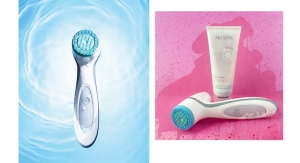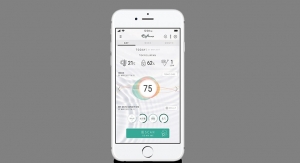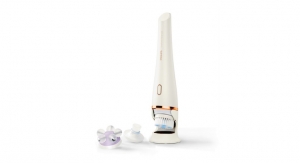04.13.18
Shiseido reports it has succeeded in visualizing the internal skin elasticity distribution -- for the first time in the world.
The company's research team accomplished this using an internal skin elasticity visualization system, which was newly developed by applying ultrasonic technology. By analyzing the level of acoustic impedance, the team discovered that the resilience in the papillary dermis, where type III collagen is abundant, begins deteriorating in the 30s.
It is widely known that type III collagen, so-called “baby collagen,” significantly decreases with age; however, its connection with resilience had not been clarified, until now.
By visualizing age-dependent changes in internal skin elasticity, the research team observed that while females in their 20s had relatively even skin elasticity, the elasticity in females in 30s started to decrease in the papillary dermis, and aging alteration was further developed in the 40s.
The team also studied how the variations in skin elasticity in the papillary dermis would change the look of the skin. The skin surface of females without any signs of variations in elasticity was more likely to be smooth, whereas that of females with decreased elasticity looked slightly rough.
The team has also discovered that type III collagen is abundant in the areas with healthy skin elasticity in the uppermost layer of the dermis. It decreases in the parts where the skin elasticity has deteriorated. This suggests that the decrease in type III collagen triggers the decrease in skin elasticity.
Watercress Boosts Type III Collagen Production
Watercress (botanical name: Nasturtium officinale) is a highly nutritious vegetable rich in vitamins, particularly beta-carotene. It is shown above.
Shiseido has discovered that watercress extract works on the dermal cells and promotes the production of type III collagen.




















